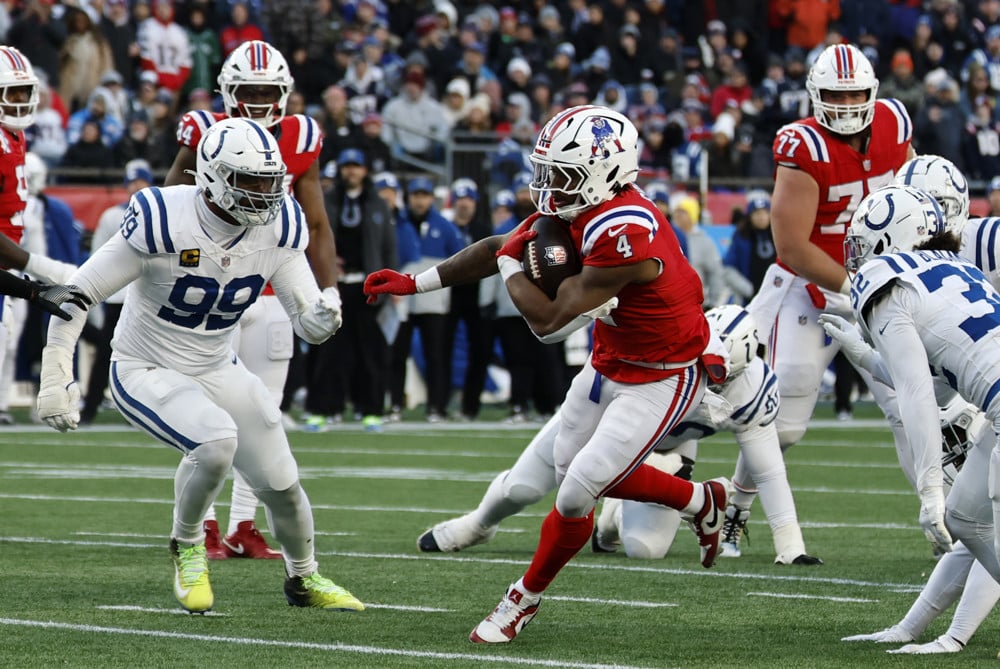Zone focusing is an essential skill to learn, particularly for street, travel, and documentary photography. Even the latest autofocus technology on new expensive cameras can’t beat this method of getting photos quickly and in perfect focus.
What Is Zone Focusing?
When you zone focus, you set your lens to manual focus mode—or preferably use a manual focus lens—and preset the focal distance using the distance scale on the lens barrel. You’re creating a zone where your subject will be in focus. Zone focusing is determined by the focal length you shoot with and the aperture you use. The wider your lens, the easier it is to use zone focus.
The diagrams below demonstrate this. Let’s assume you focus at 10 ft in front of you.
First, if you’re using the very popular 50mm lens and want to shoot at f/4, you actually have very little distance to work with, which means you need to be confident where 10 ft actually is and be really quick to get that shot. If someone is walking fast, that’s a challenge.

If we go to f/11, we have more distance to work with, but still, you need to develop some skills here to frame up a shot and grab it. The other consideration is that a 50mm may not be wide enough to get enough of your subject in the frame at shorter distances.
My preferred street and general walkabout photography lens is a 28mm. This wider lens gives me 11 ft of distance to work with at f/4, compared to just 3 ft the 50mm offers!
 With an aperture of f/11, look how much distance I have to work with now. I can let the subject get as close as 4 ft and still have acceptable focus.
With an aperture of f/11, look how much distance I have to work with now. I can let the subject get as close as 4 ft and still have acceptable focus.

There are different hyperfocal distance calculators online that can give you an idea of what sort of range your chosen focal length and aperture combination gives you to work with, but they all seem to vary with their results. The best thing is to practice with your own camera and lens. It doesn’t take long to figure it out. I find myself constantly looking ahead of me when I go out now—even without a camera—thinking, “Is that subject 10 ft away?” I’ve programmed my brain to recognize various distances.
Why Zone Focus?
Not having to worry about focusing allows us to enjoy the experience of photography so much more. We can concentrate on what’s happening and how best to compose a shot to capture a unique moment, reacting stealthily and quickly to compelling scenes without relying on the camera’s autofocus system.
Zone focusing is usually discussed in relation to people moving in street photography, but it can be used for all sorts of situations. Even shooting travel photos of fairly static objects, like these fishing boats below, can benefit. I just pointed the camera and framed the shot without the worry of a focus point hunting to find focus.

Where To Start
The best way to start zone focusing is to stay static. Maybe sit on a bench and focus on a spot on the ground where you think people will walk and be nicely within the frame. This gets you familiar with what your chosen distance looks like. You can use visual cues, like a crack in the pavement or a lamppost that someone might walk past, to set your focus zone.
Once you’ve mastered that, you’ll find yourself walking around constantly trying to figure out what 6 ft or 10 ft in front of you looks like so you can grab shots while walking or while your subject is walking.
Even though many street photographers tend to shoot moving subjects while moving themselves, I think it’s best to stop walking if you see an interesting scene in front of you. Even with a shutter speed of 1/1,000 or 1/2,000—my preferred speeds—this does not always result in sharp images. Moving or not, it’s all about practice because it is a skill that needs to be learned to get the best results.
Lens Choice
Many modern lenses no longer have a distance scale because they’re designed to be used as autofocus lenses, optimized for the camera’s autofocus tracking technology. Manual third-party lenses are the solution, or older lenses, which have the distance markings we need.
With lenses in general, there’s a trend to buy fast primes like f/1.2 these days, with many people new to photography being led to believe the more “bokeh” in a photo, the better it is. This, of course, is nonsense. If you use one for zone focusing wide open, good luck!
Because zone focusing requires a good amount of depth of field, this means slower lenses, which means you don’t need to spend a lot of money. My primes are f/2.8, yet I rarely shoot wide open. f/5.6 is my minimum aperture, with a preference for f/8 or f/11.
And as a bonus, those slower lenses are smaller and lighter too—perfect for street photography.
Are you using zone focusing?










